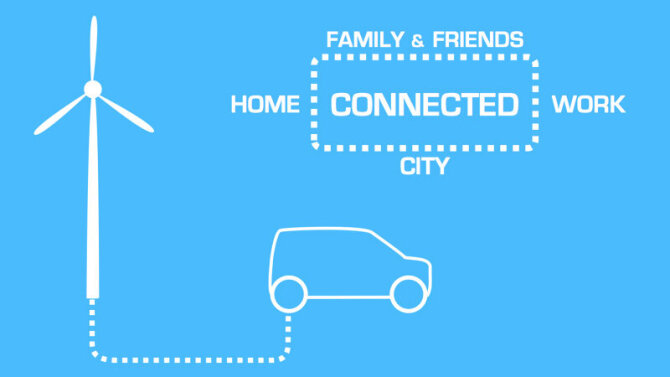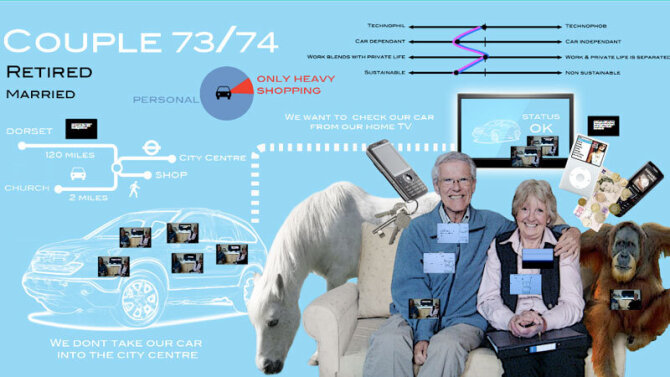TH!NK
This article describes how the Norwegian electric car company Think used Inclusive Design to explore how information interfaces could change in the vehicle of tomorrow. Users aged between 24 and 82 provided the inspiration for many new ideas.
We were quite ignorant about Inclusive Design until this project. … We did this and realized it is not specifically aimed at disabled people, but something that is benefitting the whole product and all users. That lead to a new mindset in the company.

CHALLENGE
How can a future car enhance communication and information flow?
Current car cockpits only provide limited information services such as route planning and voice calls. TH!NK saw an opportunity to go beyond this to enable connectivity between the car, home, workplace and the city.
APPROACH
Talking to users in context helped to explore digital connectivity.
Users with a wide range of ages and mobility requirements were interviewed whilst going about their daily routines. Many people were interviewed in their vehicles or on the street to get a better sense of context. They were asked to respond to images and questions aimed at gathering insights and aspirations with a particular focus on mobility and connectivity.
An interactive persona sheet was developed for each person as a tool to help capture and communicate their lifestyles and needs. This tool enabled the designer to turn the insights into design briefs.

RESULT
Design concepts that support the drivers and passengers of tomorrow.
The new digital dashboard can be adjusted to suit the preference of the driver by enlarging the size of the dials and improving contrast for older people. The display can also reduce visual clutter and show additional information such as weather or flight arrival times. The car also benefits the city providing wifi hotspots and street lighting for passers by and feeding electricity back into the national grid at peak times.